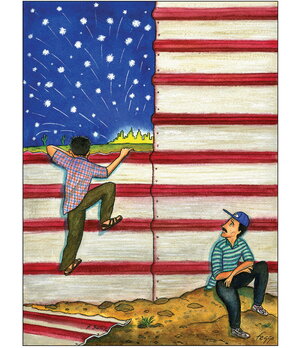
Span 326 Mapping the Borderlands focuses on how border communities imagine, experience, and coexist in el Norte, the American Southwest, and Greater Mexico.
For the queer Chicana feminist Gloria Anzaldúa, the U.S.-Mexico border is an open wound: "una herida abierta where the Third World grates against the first and bleeds" (Borderlands/La Frontera: The New Mestiza, 25). The result is a third space, a “third country” where both worlds merge into a unique “border culture” that challenges political, artistic, racial, gender, and sexual paradigms. Focusing on how border communities imagine, experience, and coexist in this unsteady and complex geography known as el Norte, the American Southwest, and Greater Mexico, Span 326 utilizes methodologies from literary studies, cultural studies, and border studies to examine a wide range of artistic productions (fictional narratives, essays, ethnographies, film, plastic art, and so on), with the objective that students identify the inherent practices of resistance and self-affirmation of the border population in Mexico, Central America, and the U.S.
TR 11:00 am – 12:20 pm, 1128 Literatures, Cultures, & Ling
CRN: 49961
Instructor: Alejandro Ramírez Mendez
Course image caption: Felipe Galindo, 4th of July from the South Border (1999)